|
Jessica Piora & Yuichi Kobayashi
Naraijuku: A Historical Townscape between Edo and Kyoto

Table of Contents
The city of Naraijuku
If you are a fan of old Japan and wish to enjoy the atmosphere of the Edo era, Naraijuku is the right destination for you. It was the 34th post town on the Nakasendo-Highway, a route that connected Edo (Tokyo) and Kyoto, and facilitated communication, travel, and commerce between the two cities. Travelers frequented it in such numbers that it earned the name Narai of 1000 houses. Today historical buildings remain, and new buildings must abide by specific construction standards to maintain the old Edo atmosphere. It is the perfect destination for those who wish to take a relaxing stroll among old wooden buildings of great cultural and historical relevance.
Access
 Naraijuku station
Naraijuku station
To Reach Naraijuku from Nagoya Station: Take the Chuo Line for Nagano. At Kiso Fukushima, transfer to the Chuo Line for Matsumoto and get off at Naraijuku. Another option is the Chuo Line to Nakatsugawa. Then transfer to the train for Matsumoto, and get off at Naraijuku.
Let's protect our Town
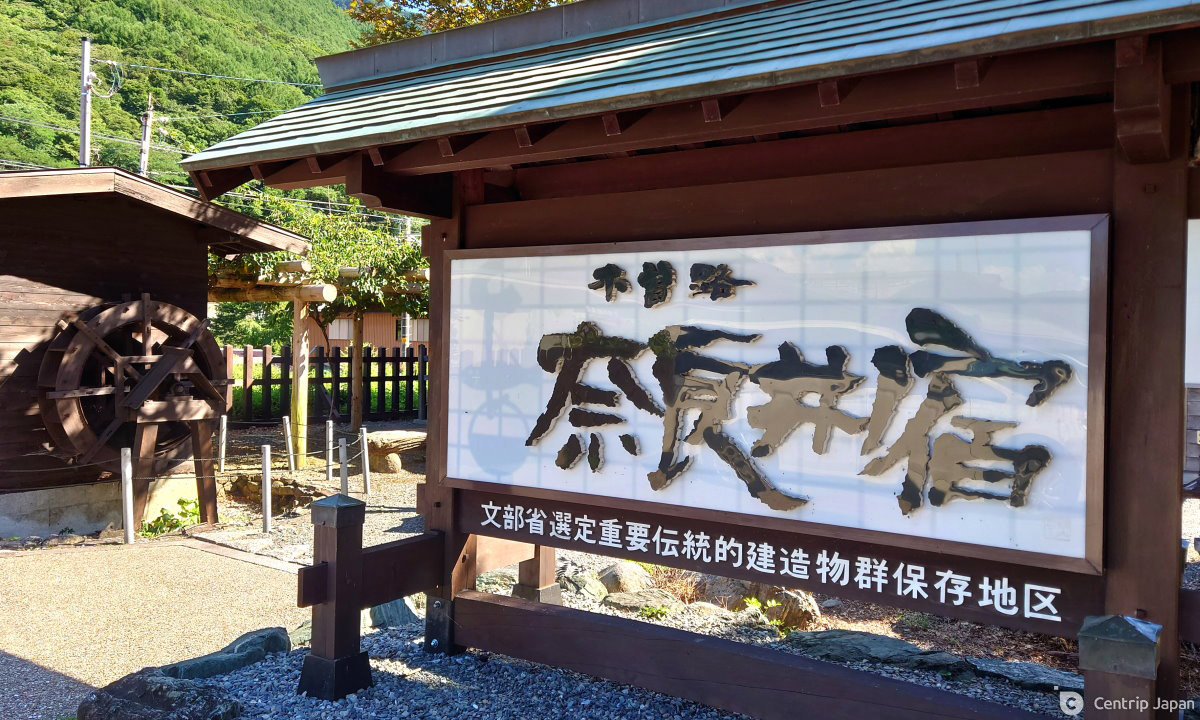 Welcome to Naraijuku
Welcome to Naraijuku
As soon as you disembark, your appreciation for the location grows. Every building (including the station) is an Edo-style wooden building. A sign stating “Let’s protect our town” welcomes you to the city, and this is precisely the intention that unites the people of Naraijuku.
Sennen-ji and the legendary rocks!
 Sennen-ji
Sennen-ji
Have you ever seen a legendary rock in person? Well, this is your chance. The first stop is Sennen-ji of the True Pure Land sect of Buddhism.
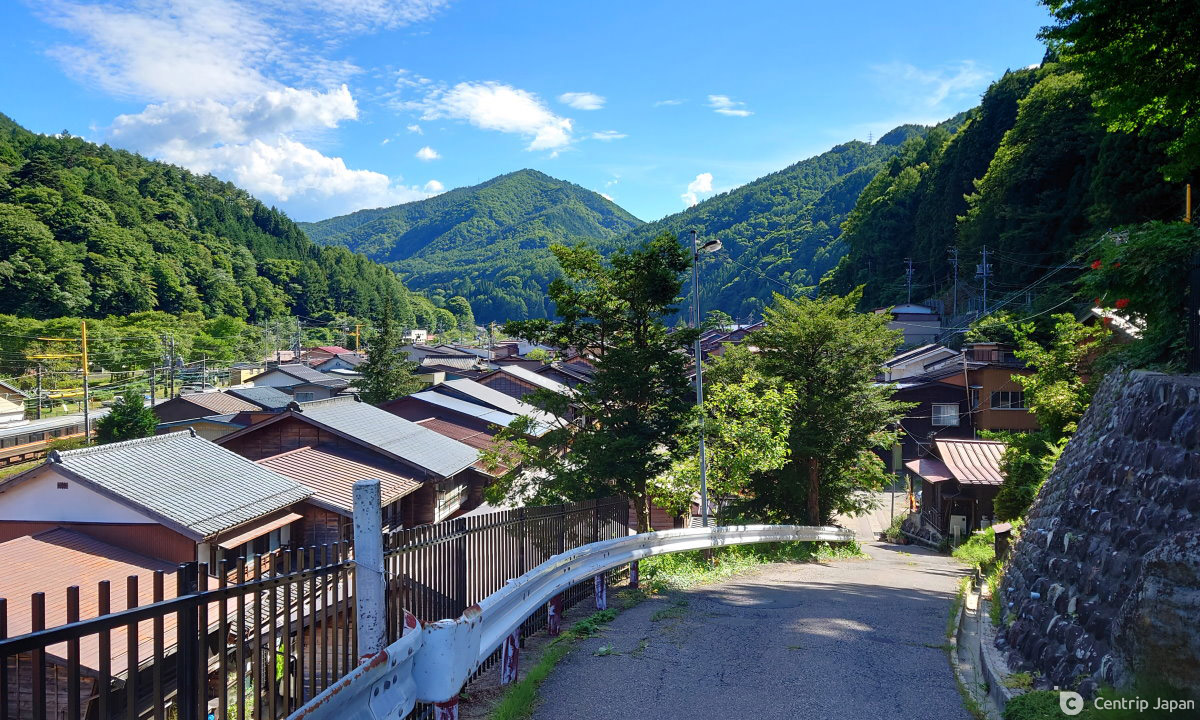 Take a stroll near Sennen-ji
Take a stroll near Sennen-ji
It is a lovely place for a stroll, with a nice view of Naraijuku, and the legendary groaning rocks at the entrance will grab your attention. In 1729 the temple was transferred to this location, these two rocks appeared during the process and started groaning, and so they remain here as the legendary groaning rocks.
 The legendary groaning rocks
The legendary groaning rocks
Wooden Houses and Shops
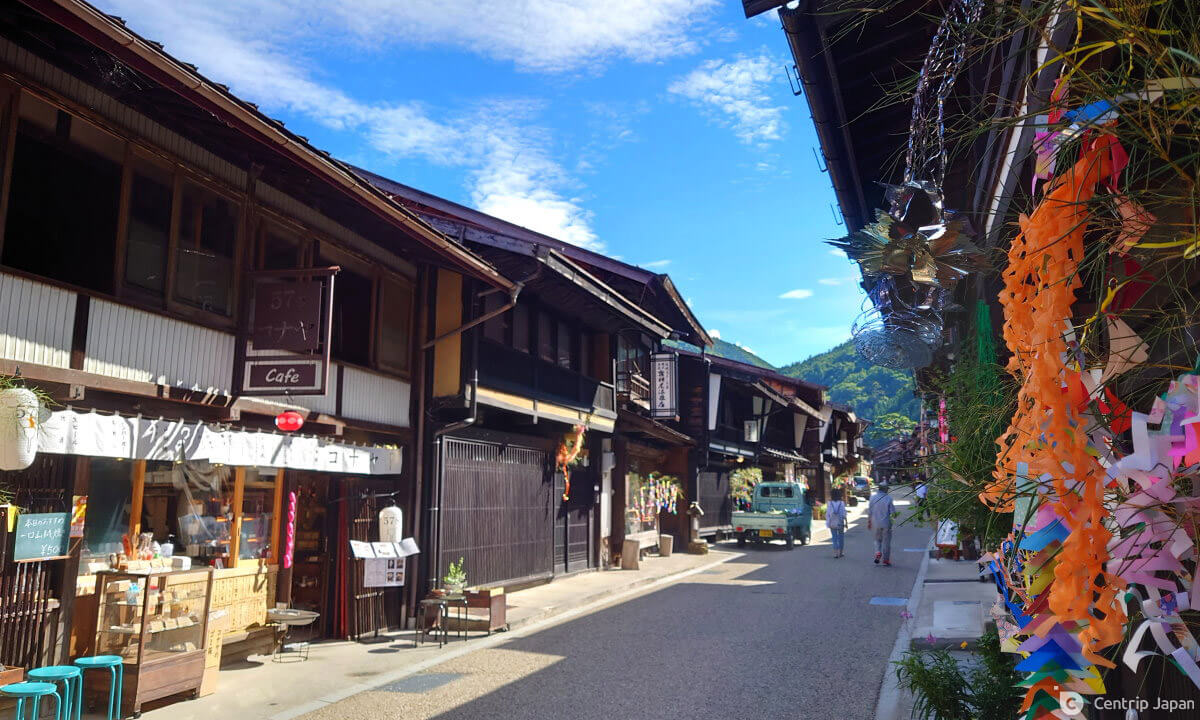 The traditional streetscape in Naraijuku
The traditional streetscape in Naraijuku
In 1978, Naraijuku was designated an Important Preservation District for Groups of Traditional Buildings to preserve the atmosphere of the old post town. The streetscape and the smell of wood will take you back to the Edo era.
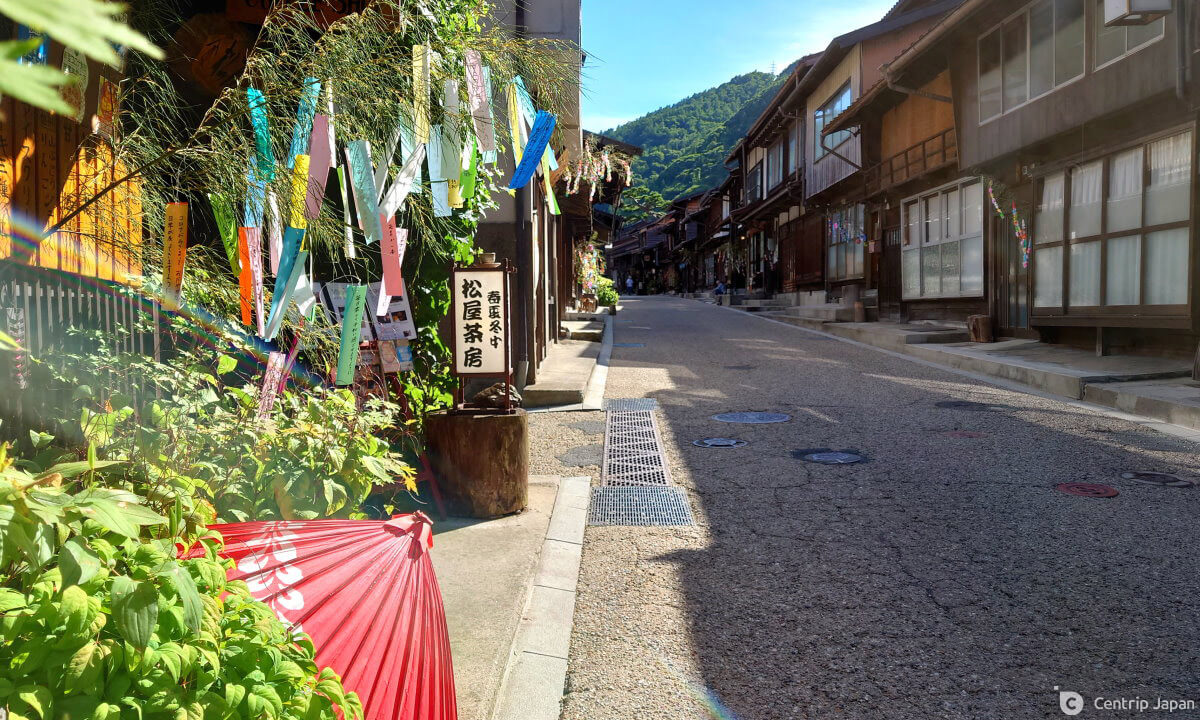 Traditional wooden buildings
Traditional wooden buildings
Most buildings are restaurants and shops selling tasteful wooden items and souvenirs. The shop specializes in minebari combs. Minebari wood is difficult to carve and results in remarkably thin combs. There are only two master artisans who can carve these today, and the youngest is 70 years old.
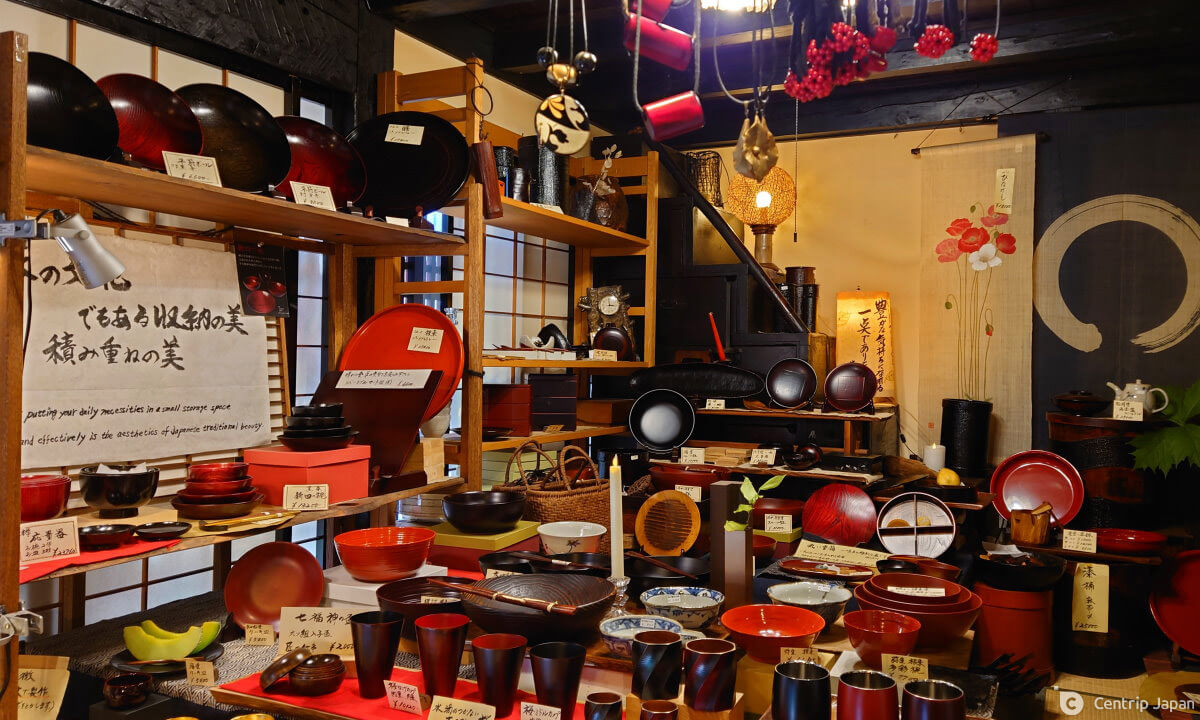 Typical wooden items sold in Naraijuku
Typical wooden items sold in Naraijuku
You can purchase traditional lacquerware (kiso shikki), lunch boxes and cups made of bent cypress wood (magemono), and wooden toys, like this bamboo copter, chopsticks, and all sorts of wooden items.
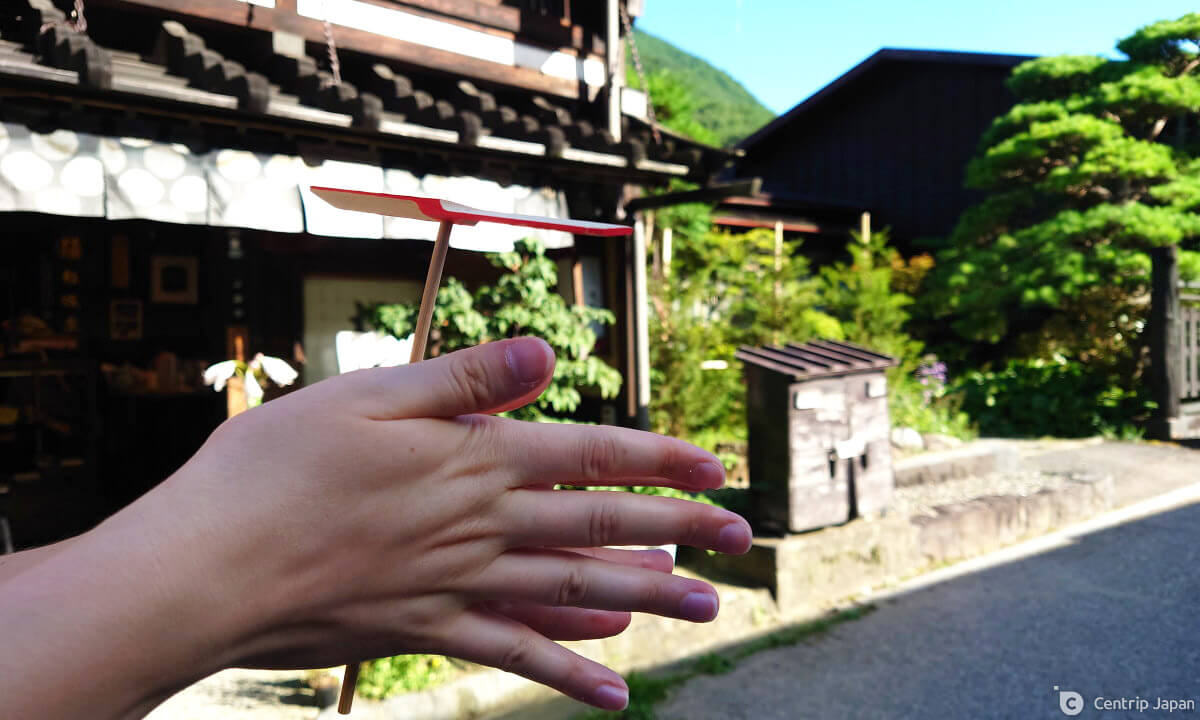 Taketombo, a bamboo copter
Taketombo, a bamboo copter
 A toy shop
A toy shop
Little Water Fountains
Walking along the old road (about 1 km) you'll encounter these little water fountains, originally built for travelers. The water is drinkable, so have a sip, water is delicious.
 Refreshing drinkable mountain water
Refreshing drinkable mountain water
Chosen-ji Temple
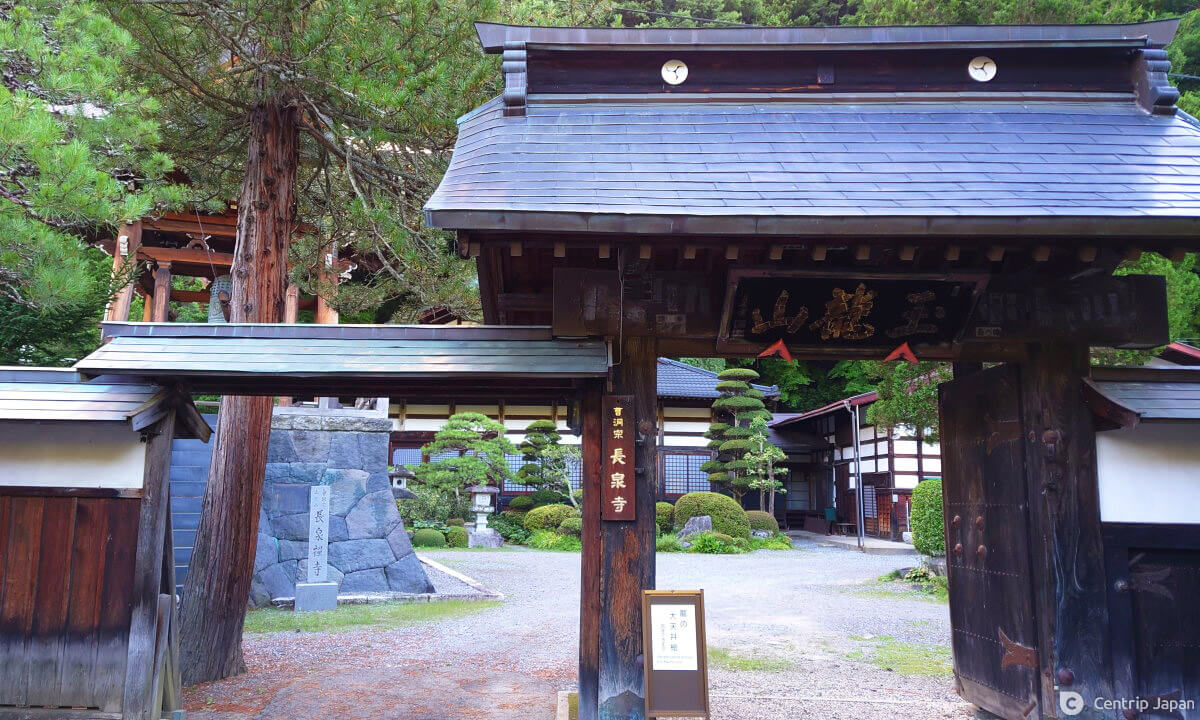 Chosen-ji entrance
Chosen-ji entrance
Chosen-ji is a Zen temple with two features. The first is its affiliation with tea commerce. During the Edo era, tea leaves were brought to the Shogun from Uji (a small city near Kyoto, famous for tea) via the Nakasendo road. The temple offered hospitality to merchants that transported the tea leaves, and a place of rest.
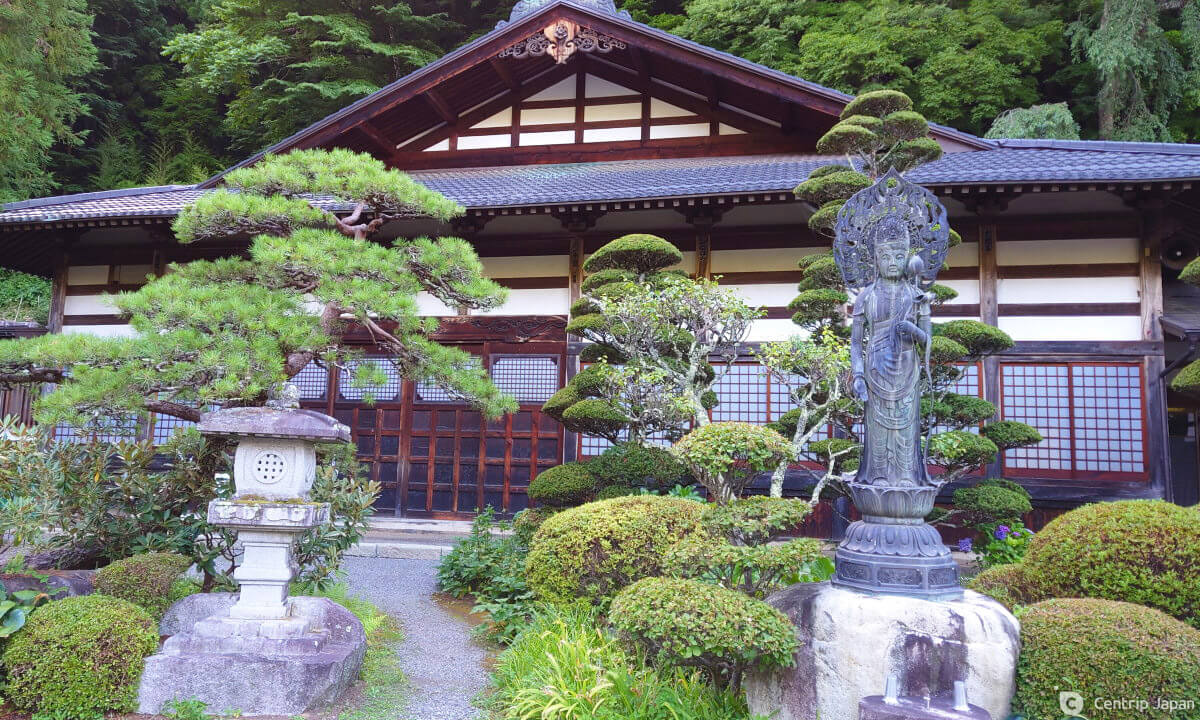 Chosen-ji
Chosen-ji
The second characteristic is the beautiful dragon painting on the ceiling. The dragon, painted about 130 years ago, watches over training monks.
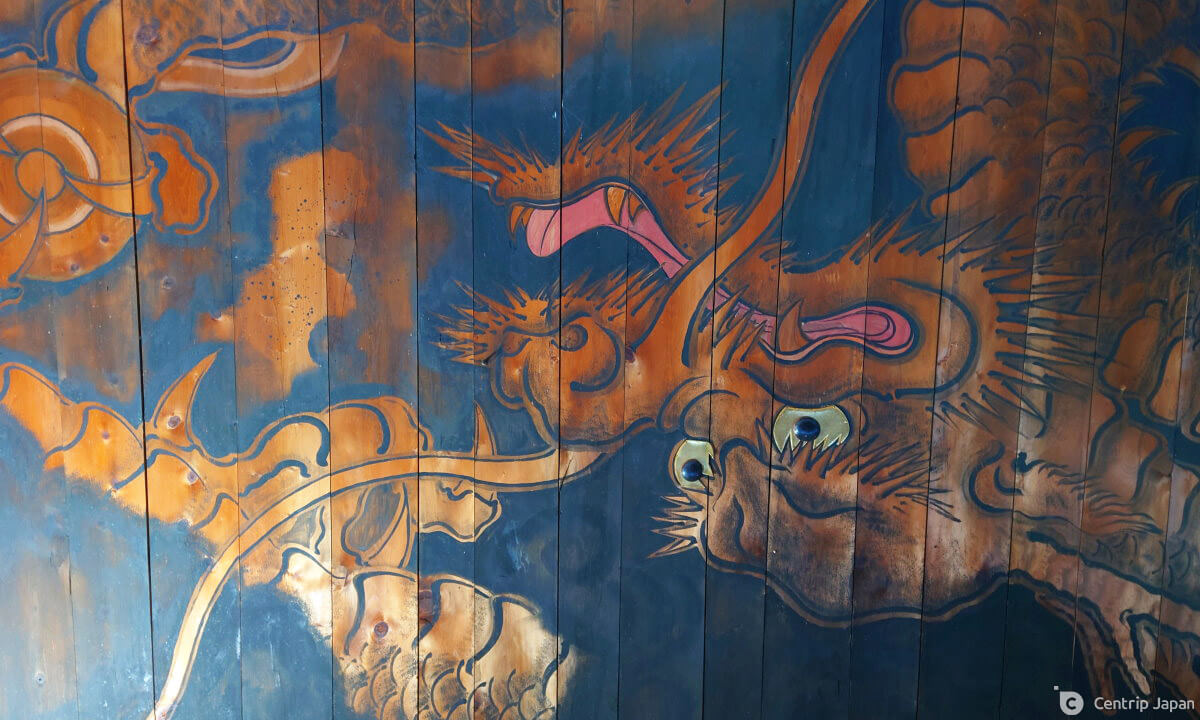 The roaring dragon
The roaring dragon
It was named the “roaring dragon” because of the sound that echoed through the temple whenever someone clapped their hands. Unfortunately, clapping hands inside the pavilion is no longer allowed to avoid damaging the old building.
Shizume Shrine
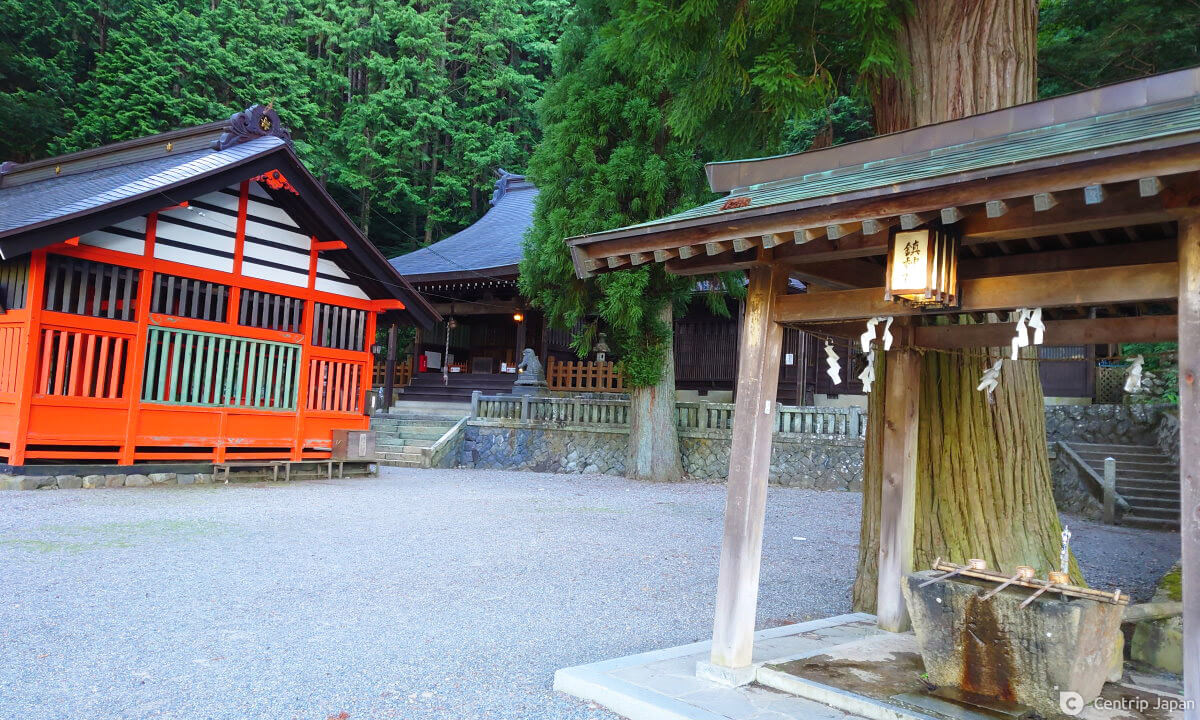 Shizume Shrine
Shizume Shrine
This is the village shrine where you can appreciate the atmosphere of a Japanese Shinto.
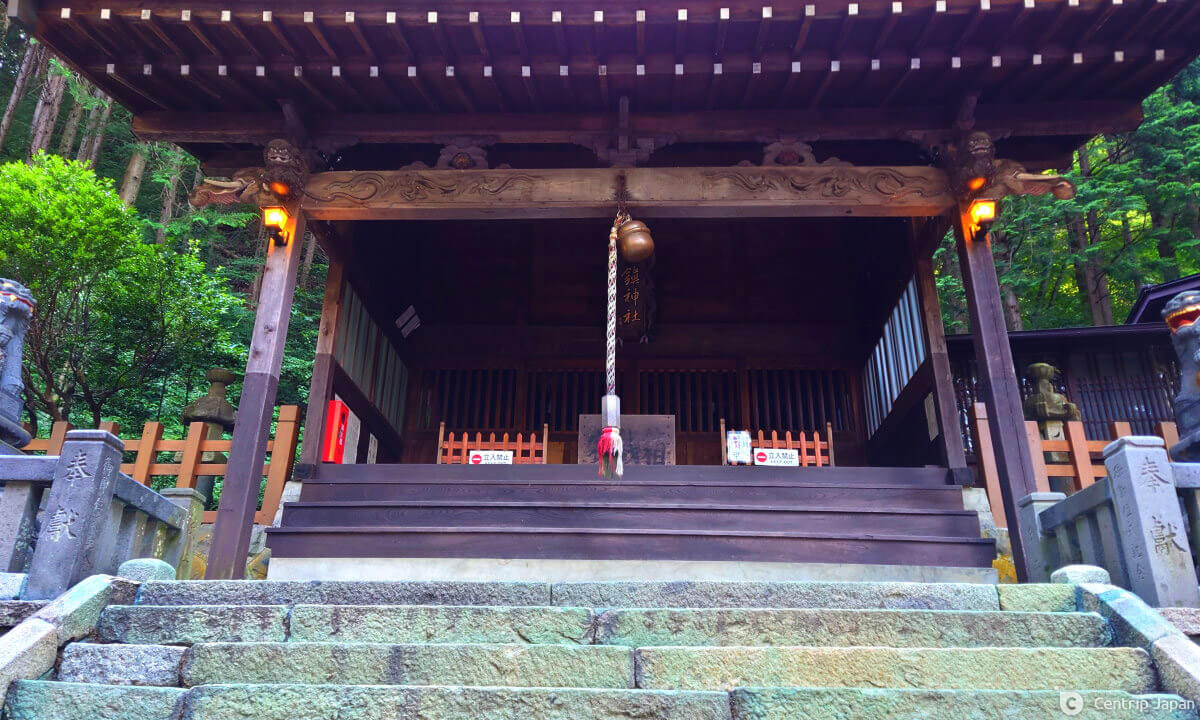 The prayer area
The prayer area
If you can visit in Summer, an annual festival celebrating this shrine takes place on August 12. Young people perform folk dances and traditional music.
Kakigoori
If you feel like taking a break, why not try some Kakigoori? Kakigoori is syrup poured over shaved ice. It is sweet and refreshing! Strawberry is the most popular flavor.
 Ichigo kakigoori, Matcha kakigoori
Ichigo kakigoori, Matcha kakigoori
Walks and Hikes
You have several options for hikes and walks around town. The old cityscape stretches for about a kilometer over the old Nakasendo road, but if you feel like walking more, you can try to climb up the mountain paths and enjoy a hike among the trees.
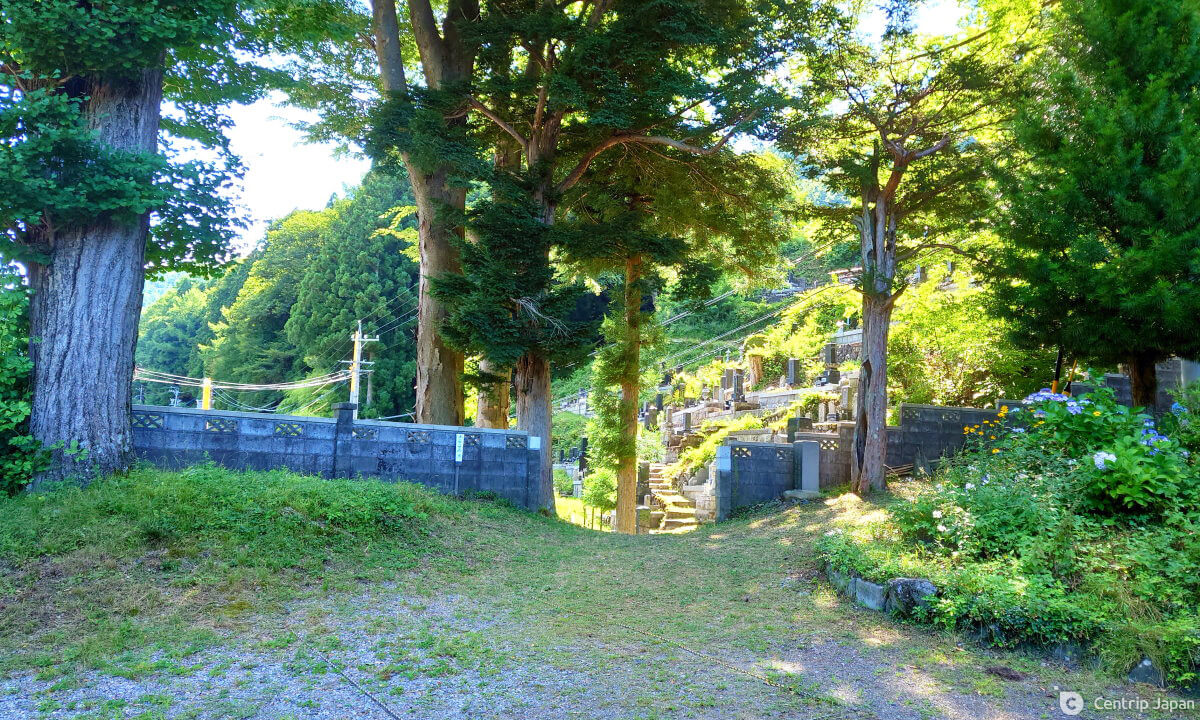 Enjoy the nature
Enjoy the nature
Or walk the path by the railroad on your way back for a quieter route.
Wrap Up
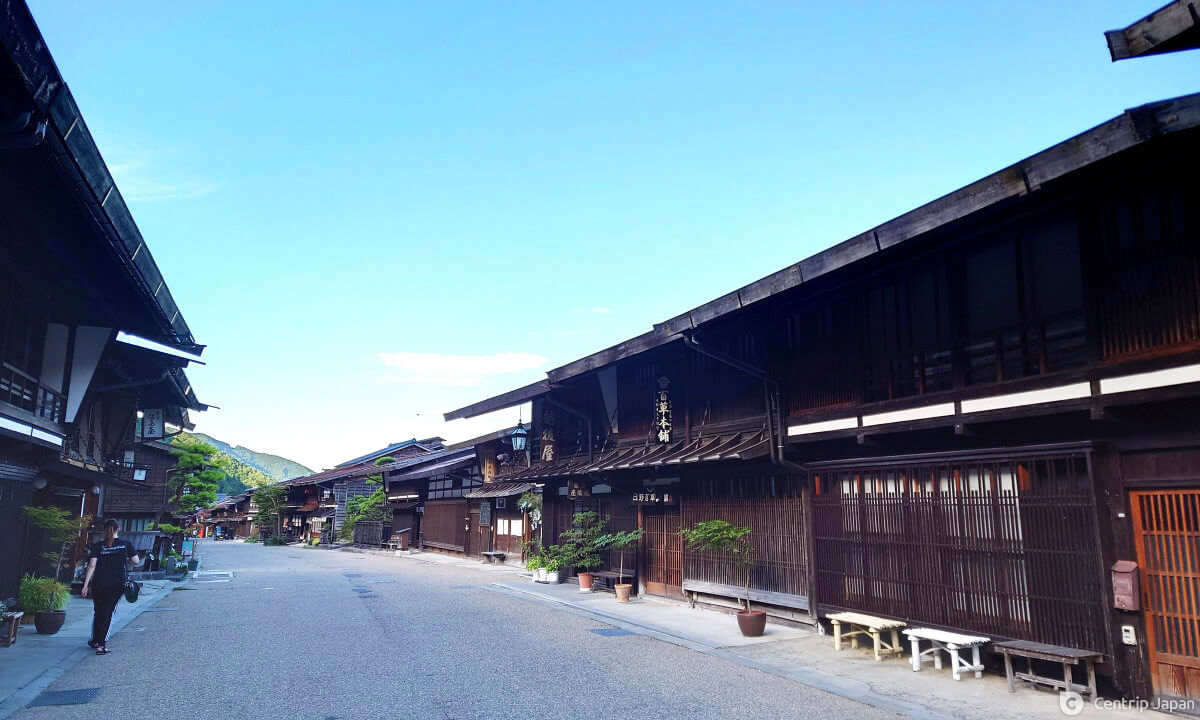 Naraijuku, the streetscape
Naraijuku, the streetscape
There are several places and hidden corners you can explore in Naraijuku but remember it is the people of Naraijuku who make it possible to preserve the history. The people of Naraijuku are happy to receive visitors, as they care deeply about protecting this location. A lady working at a lacquerware shop told me that she always takes time to talk to everyone over a cup of tea, regardless of her sales. You will find that people are willing to share their stories with you. If you have the chance, I hope you will pay a visit to this beautiful location.
Click here to get the latest information on Central Japan.Centrip Japan - Nagoya and Chubu Information

